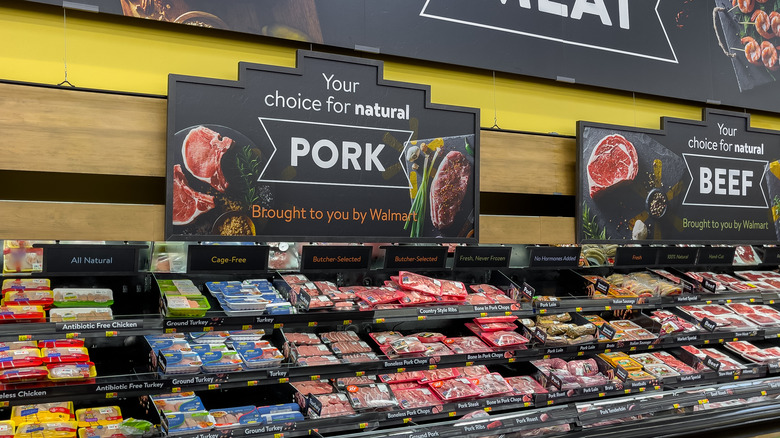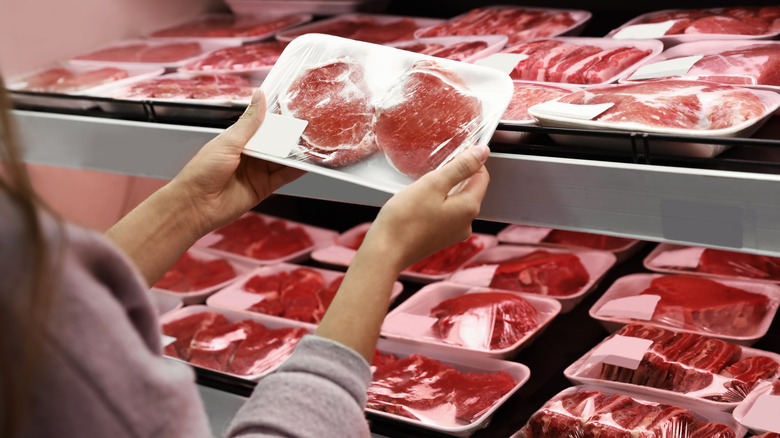Why You May Be Seeing Less Beef And More Pork In Grocery Stores
Our food spending habits are influenced by many things, such as trendy foods (remember when everyone was eating kale?), but recently, one of the most influential factors is inflation. Over the summer, food inflation was at its highest point since 1979, per Business Insider. This led to consumers changing their spending habits by keeping an eye out for sales, using coupons, or switching grocery stores completely – Aldi saw 2.5 million customers in May 2022, most of them from middle-to-high-income households. Others cut back their budget for non-essential food, which is classified as trading down – buying chicken instead of steak or opting for frozen vegetables over fresh. Some families even opted for buying whole or halves of animals, according to The Washington Post.
Inflation reached a peak of 9.1% in June 2022 but is trending downward, reaching 6.5% in December 2022, per U.S. Inflation Calculator, but things are still expensive. Beef hit a record high in October 2021 at $7.90 per pound for Choice cuts but was down a year later to $7.42 per pound, per Food Business News. This hasn't deterred Americans, who are still willing to pay a premium price for USDA Prime beef, but they may soon run up against supply issues.
Environmental and inflation factors impact herd sizes
If you're a beef eater, you can expect to find less beef on the shelves and at a higher price. The forecasts for this year project a lower herd total in the U.S., the lowest it's been since 2015. A count done on January 1 this year estimates 89.5 million head of cattle, down from a typical 94.8 million, per Food Business News. Environmental and climate factors, such as drought and record-high temperatures, have made farming and ranching more challenging. There's less water and more burnt grass, meaning cattle ranchers can't maintain their herds, so they have no choice but to sell or cull their herds. The lack of available grazing area means farmers need to supplement with feed, but inflation has taken a toll on that, as well, per CNN.
Food Business News also reports that there has been a rise in female slaughter and it isn't showing signs of slowing. In fact, it's at its highest since 2003, which means there are fewer cows giving birth which leads to decreased availability. However, both pork and poultry production is on the rise, with the projections up for the year. The USDA Economic Research Service predicts that rates will rise by 1.8% this year, with pork production at 27.345 billion pounds, per Food Business News — that's a lot of bacon.

